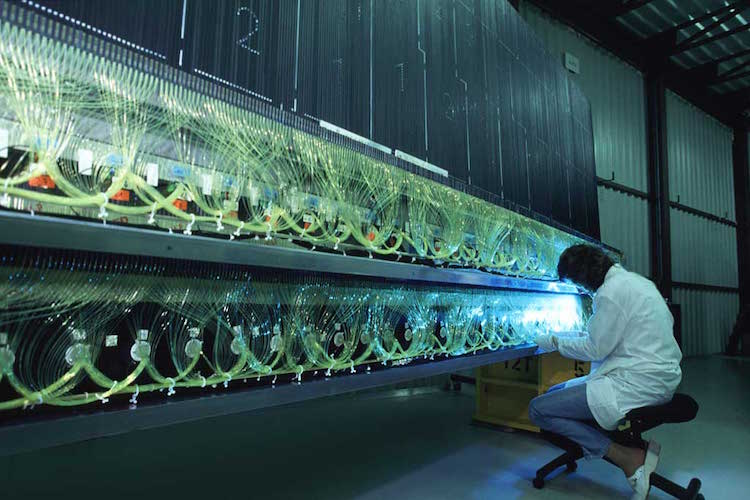Calorimetry

Calorimetry
Calorimetry is one of the fundamental instrumentation technologies for high-energy colliders and is essential for measuring the energy and direction of the quarks and gluons produced in the collisions.
Find out more about the Chicago ATLAS effort in Calorimetry here.
Approach
- The ATLAS hadronic "Tile" calorimeter consists of a fine-grained steel matrix with 430,000 "tiles" of plastic scintillator dispersed in the matrix. Optical fibers from the tiles are grouped into 5,000 calorimeter cells, whose signals are detected and recorded by 10,000 photomultiplier tubes and associated readout electronics. Signals from each photomultiplier are digitized every 25 ns and processed with dedicated electronics to obtain energy and time measurements.
- The Chicago ATLAS group is responsible for the calibration of the readout electronics and plays a leadership role in the maintenance and operation of the calorimeter as a whole.
- David Miller collaborates deeply with Mark Oreglia to plan and execute the upgrade of the front-end electronics required to cope with the higher radiation levels and to take advantage of technology improvements since the time of the original design.
- Detailed measurements of the performance of the calorimetry to measure the energy deposits from the jets of particles produced by quarks and gluons is a critical part of the Miller Lab efforts.
- Find out more about the Chicago ATLAS effort in Calorimetry here.
- The group is also thinking about new detector and calorimeter concepts for the proposed International Linear Collider (ILC) for which David Miller plays a role in the Detector and Technology R&D working group within the International Development Team (IDT) for ILC.